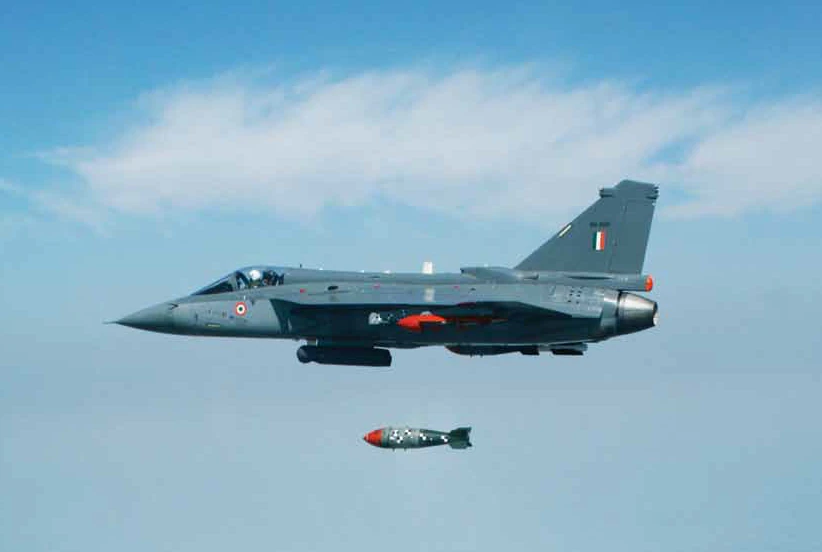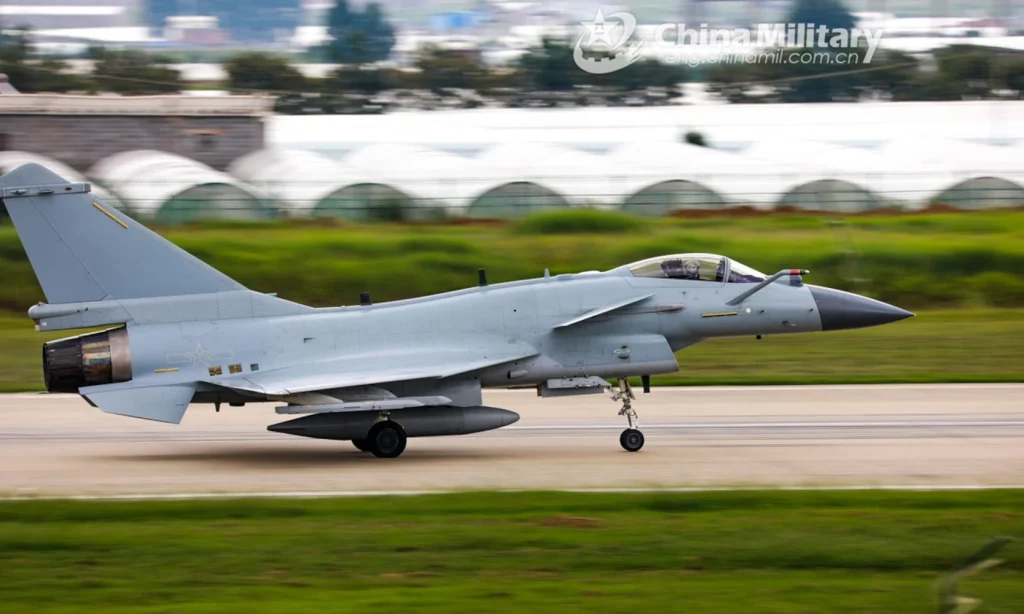The Light Combat Aircraft Tejas Mark 1A, made by the Indian state-owned Hindustan Aeronautics Limited and the Chengdu Aviation Industry developed Jian 10C, have featured as leading light fighters in the global export market in a recent industry report. Frontier India analyses both platforms in a side-by-side technical comparison.
The indigenously designed Chinese J-10C is a small single-engine multi-role fighter capable of operating in a multitude of weather conditions. The aircraft, dubbed the ‘Vigorous Dragon’ in the west, was designed to carry out strike and air-to-air combat operations for the People’s Liberation Air Force (PLAAF).
The indigenously designed Indian LCA Tejas Mk 1A is a 4.5 generation multi-role light fighter. The aircraft primarily comes as a single-seat jet but offers a twin-seat variant. The LCA Tejas Mk 1A boasts a relaxed statics ability, a fly-by-wire flight control system, multi-mode radar and integrated digital avionics systems and a flat rated engine, among other technical features.
The J-10C is 51 feet seven inches long, while the LCA Tejas Mk1A is 43 feet four inches long. The J-10C’s wing area is 360 square feet, while the LCA Tejas Mk 1A touts wing space of 413 sq ft. The J-10C’s empty weight is 8850 kilograms, while the LCA Tejas Mk1A has an empty weight of 6,560 kg. The J-10C has a Maximum Takeoff Weight (MTOW) of 19,277 kg, whereas the LCA Tejas Mk1A’s MTOW is 13,500 kg.
The LCA Tejas Mk1A comes integrated with the ASTRA Mk1 Beyond Visual Range (BVR) missile, Active Electronically Scanned Array (AESA) radar, and self-protection jammers are giving the indigenous Indian light fighter an edge over its contemporaries in BVR warfare. It may be important to note that the introduction of pod self-protection jammers and AESA helps enhance the LCA Tejas Mk1A’s survivability.

The LCA Tejas Mk1A is known for its pure delta wing configuration; it does not sport tails planes, foreplanes, or a single dorsal fin. The J-10 has an internal fuel capacity of 3860 kg and an external capacity of 3120 kg. The LCA Tejas Mk1A’s internal fuel capacity is 2458 kg, while its external fuel capacity is 2201 kg.
The J-10 is propelled by the indigenous WS-10 engine, which can produce 140 kilonewtons of thrust. On the other hand, the LCA Tejas Mk1A is powered by a single General Electric F404, capable of producing 85 kN thrust with an afterburner. The J-10 can cruise at top speeds of 2305 kilometres per hour (Mach 2.1), the LCA Tejas Mk1A can fly at top speeds of 2220 km/hr.
The J-10C deploys the PL-15 for long-range interception. The PL-15 is a dual-stage BVR air-to-air missile with an effective range of 200 km or more and is meant for fighter support targets. The effectiveness against fighter sizes target is unknown. For shorter ranges, J-10C is equipped with a PL-10 missile with a range of 20 km. The LCA Tejas Mk1A comes with an indigenous Electronic Warfare (EW) suite, which comprises a radar warning receiver, integrated, self-protection jammer, chaff and flare dispenser system and BVR missile capabilities.
The LCA Tejas’s Mk1A comes equipped with the I Derby ER, an extended range version of the Derby, which enhances the range to 62 miles and the Python 5, which has a range up to 20km. It is planned to equip it with Astra Missile Mk I with a range of 110 km.
The J-10 has a 900 km combat range, while the LCA Tejas Mk1A has a 500 km combat range. Both aircraft have a ferry range of 3200 km.

The J-10C has a service ceiling of 56000 ft, while the LCA Tejas Mk1A has a service ceiling of 52500 ft. The J-10C sports 7 hard points. Six are situated under the wing, one under the fuselage. The Chinese fighter comes with a Gryazev-Shipunov GSh 23 gun and has an external fuel capacity of 5600 kg.
The J-10C is equipped with 90 mm unguided rocket pods and has a weapons payload ranging from PL-8,10,12, 15 air-to-air missiles to the KD-88 and YJ-91 air-to-surface missiles. The Vigorous Dragon can carry laser-guided bombs, satellite-guided bombs and unguided bombs weighing 250 kg and 500 kg.
The LCA Tejas Mk1A has a quadruplex digital fly-by-wire flight control system with associated flight control laws. Extensive use of uber-sophisticated composites in the airframe gives a high strength to weight ratio, long fatigue life and low radar signature. Furthermore, the aircraft comes with a 23mm
Twin barrel GSh cannon and eight hardpoints. One of the hardpoints is in the portside intake trunk; another is under the fuselage, while six are under the wings.
The LCA Tejas Mk1A can carry payloads as high as 5300 kg, has five to eight rocket pods, and can carry various missiles like the R-73, I Derby, Python, ASRAAM Astra Mk 1 and the R-77. The fighter jet also boasts Rudran-1 anti-radiation missiles and KH-35 and 59MK anti-ship missiles, SPICE, HSLD, DRDO glide bombs, LGBs, cluster munitions and unguided bombs as part of its precision-guided munition options.
The J-10C’s estimated cost is $35 million, while the LCA Tejas Mk1A’s estimated cost is $41 million.

J10c is medium weight fighter its not LCA , JF17 is LCA they are not in same class